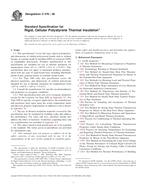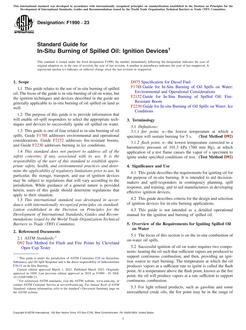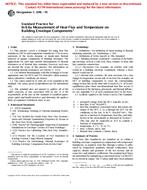1.1 This practice covers the determination of the thickness of glass installed in airport traffic control towers (ATCT) to resist a specified design loading with a selected probability of breakage less than or equal to either 1 lite per 1000 or 4 lites per 1000 at the first occurrence of the design wind loading.
1.2 The procedures apply to common outward sloping cab glass designs for which the specified loads do not exceed 10 kPa (210 psf).
1.3 The procedures assume control tower cab glass has an aspect ratio no greater than 2.
1.4 The procedures assume control tower cab glass has an area no less than 1.86 square metres (20 square feet).
1.5 The procedures apply only to annealed monolithic, annealed laminated, or annealed insulating glass having a rectangular or trapezoidal shape.
1.6 The use of the procedures assumes the following:
1.6.1 Annealed monolithic and annealed laminated glass installed in ATCTs shall have continuous lateral support along two parallel edges, along any three edges, or along all four edges;
1.6.2 Insulating glass shall have continuous lateral support along all four edges; and
1.6.3 Supported glass edges are simply supported and free to slip in plane.
1.7 The procedures do not apply to any form of wired, patterned, etched, sandblasted, or glass types with surface treatments that reduce the glass strength.
1.8 The procedures do not apply to any form of heat treated glass, chemically strengthened glass, or any type of glass with surface treatments intended to increase the glass strength.
1.9 The procedures address the determination of thickness and construction type to resist a specified design wind load at a selected probability of breakage. The final glass thickness and construction determined also depends upon a variety of other factors (see 5.3).
1.10 These procedures do not address blast loading on glass.
1.11 The values stated in SI units are to be regarded as standard. The values given in parentheses are mathematical conversions to inch-pound units that are provided for information only and are not considered standard.
1.12 This standard does not purport to address all of the safety concerns, if any, associated with its use. It is the responsibility of the user of this standard to establish appropriate safety and health practices and to determine the applicability of regulatory limitations prior to use.
Product Details
- Published:
- 04/01/2012
- Number of Pages:
- 17
- File Size:
- 1 file , 430 KB
- Redline File Size:
- 2 files , 810 KB


